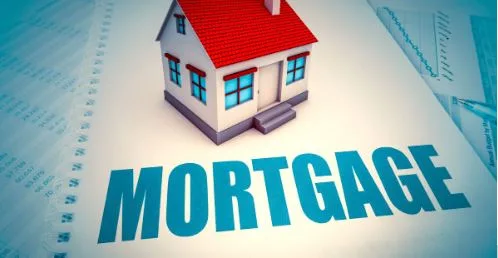The Hidden Wealth in Your Walls: Why More Retirees Are Turning to Reverse Mortgages
As retirees navigate the shifting landscape of financial security, many find themselves balancing rising living costs, healthcare needs, and the challenge of outliving their savings. For many households, the largest untapped source of wealth is the home itself. Reverse mortgages—financial tools that convert home equity into accessible cash—are becoming an increasingly valuable strategy for retirees who want to remain in their homes while strengthening their financial flexibility.
Why Reverse Mortgages Are Growing in Popularity
The U.S. Census Bureau reports that nearly 80% of adults over age 65 own their homes, often free of traditional mortgage debt. According to the Federal Reserve’s 2019 Survey of Consumer Finances, housing wealth makes up over 50% of total wealth for older households. This concentration of wealth in housing means that for many retirees, home equity is not just a safety net—it’s central to long-term financial planning.
Unlike traditional refinancing or selling the property, a reverse mortgage allows retirees (age 62 or older) to borrow against their home without mandatory monthly payments. Instead, repayment is deferred until the homeowner moves, sells, or passes away. This arrangement can free up cash flow to cover day-to-day expenses, medical costs, or unexpected financial shocks.
Eligibility and How It Works
To qualify for a Home Equity Conversion Mortgage (HECM)—the most common type of reverse mortgage backed by the Federal Housing Administration (FHA)—borrowers must:
- Be at least 62 years old.
- Own their home outright or have a low remaining mortgage balance.
- Occupy the home as their primary residence.
- Stay current on property taxes, homeowner’s insurance, and maintenance.
The amount available to borrow depends on several factors: the borrower’s age, the appraised value of the home, interest rates, and FHA lending limits. Generally, the older the borrower and the higher the home value, the more funds are available.
Options for Receiving Funds
Retirees can customize how they access reverse mortgage proceeds:
- Lump sum – Provides immediate access to a large amount, useful for paying off debts or covering major expenses.
- Line of credit – Offers flexibility, allowing funds to be drawn only when needed. Importantly, the unused balance of a reverse mortgage line of credit grows over time.
- Monthly payments – Ensures a steady income stream, which can supplement pensions or Social Security.
- Combination plans – Mixes monthly payments with a line of credit for tailored flexibility.
Strategic Role in Retirement Planning
A reverse mortgage can enhance a retirement income portfolio in several ways:
- Mitigating Sequence-of-Returns Risk: During market downturns, retirees risk depleting their portfolios too quickly if they continue withdrawals. Using reverse mortgage funds during downturns allows investment accounts time to recover.
- Healthcare & Long-Term Care: Fidelity estimates the average 65-year-old couple will need nearly $315,000 for healthcare expenses in retirement. Reverse mortgages can help cover these unpredictable, often rising costs.
- Estate Planning: Retirees concerned about passing on wealth may initially hesitate, but reverse mortgages can preserve liquid assets for heirs by drawing from home equity instead of investments.
- Inflation Hedge: Real estate appreciation, historically averaging 3–4% annually in the U.S., provides a natural inflation buffer. Homeowners in markets like California, where 10-year appreciation exceeded 70%, have even more to leverage.
Key Risks and Considerations
While reverse mortgages provide flexibility, retirees must weigh potential drawbacks:
- Erosion of Home Equity: Using home equity for current income reduces what is left for heirs.
- Costs & Fees: Reverse mortgages carry upfront insurance premiums, origination fees, and closing costs, which can be higher than traditional loans.
- Obligations: Failure to pay property taxes, insurance, or maintain the home can trigger foreclosure.
- Longevity Risk: Borrowers who live much longer than expected may consume most of their equity, leaving fewer options later in life.
- Government Benefits: While Social Security and Medicare are unaffected, reverse mortgage proceeds could impact eligibility for needs-based programs like Medicaid.
Reverse Mortgage vs. HELOC: Which is Better?
A Home Equity Line of Credit (HELOC) is another way to tap home equity, but it requires regular monthly payments and can be frozen or reduced by the lender in times of economic stress. By contrast, a reverse mortgage does not require repayment as long as the borrower meets program conditions and remains in the home. For retirees on fixed incomes, this distinction often makes reverse mortgages a safer, more predictable choice.
Safeguards for Borrowers
Modern reverse mortgages—especially HECMs—have protections to address past criticisms:
- Non-recourse loan: Borrowers or heirs never owe more than the home’s value, even if the loan balance exceeds it.
- Mandatory counseling: Applicants must complete a session with a HUD-approved counselor to ensure they understand terms and obligations.
- Spousal protections: Eligible non-borrowing spouses can remain in the home after the borrower’s death under certain conditions.
The Bottom Line
For retirees who want to remain in their homes, manage rising living costs, and preserve investment assets, reverse mortgages offer a powerful but complex tool. They provide cash flow flexibility, help mitigate investment risks, and can even serve as a safety net for healthcare or long-term care expenses.
Still, reverse mortgages are not for everyone. The decision should be made in consultation with financial advisors, estate planners, and family members to weigh long-term trade-offs. Used wisely, however, they can transform illiquid home equity into lasting retirement security.
Montecito Capital Management
225 East Carrillo Street, Suite 203
Santa Barbara, CA 93101
(805) 965.7955 I ContactUs@McapitalMgt.Com


